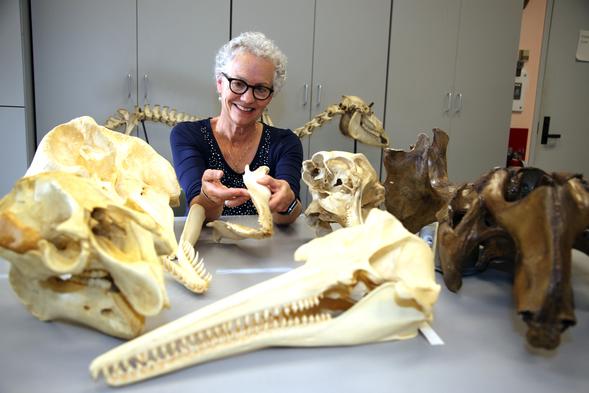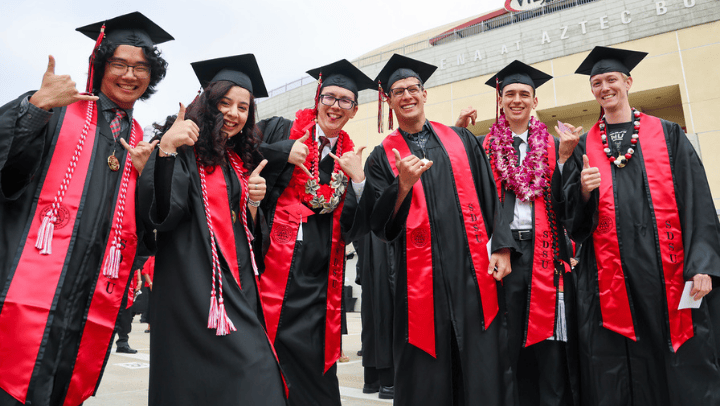Anatomy of Excellence
Biologist Annalisa Berta has been elected a fellow of AAAS for her work studying whale anatomy and evolution.

San Diego State University biologist Annalisa Berta has been elected by a council of her peers as a fellow of the American Association for the Advancement of Science (AAAS), a prestigious honor recognizing her many contributions to the study of the evolutionary biology of marine mammals.
Berta received her Ph.D. in paleontology from the University of California, Berkeley, in 1979, then did post-doctoral work at the University of Florida. She came to SDSU in 1982 as a lecturer teaching human anatomy. At the time, her research expertise was mostly in terrestrial carnivores, but a research trip to the Smithsonian Institution in Washington, D.C. changed the course of her career.
Whale's tale
There, she was asked to help study a fossil seal and she became intrigued with marine mammals. In the decades since she joined SDSU as a tenure-track faculty member in 1989, Berta has published numerous highly cited studies and a handful of books for both academic and popular audiences. While her earlier marine mammal work focused on pinnipeds (seals, sea lions and walruses), she earned distinction in the field with her later studies of whale anatomy and evolution.
“One of my greatest triumphs has been bringing a comparative and integrative approach to cetacean evolution and biology,” Berta said. “I take an evolutionary approach to questions involving feeding, locomotion and hearing. How did a structure evolve? How many times did it evolve? And also, can knowing this help with conservation efforts for these animals?”
For example, knowing that gray whales survived Pleistocene sea level changes by employing more generalized feeding strategies suggests modern whales may also be able to adapt to a fluctuating food supply, a consequence of global warming, she said.
Curated collection
Berta has also worked tirelessly to build up SDSU’s marine mammal collection in the university’s prized Museum of Biodiversity, which hosts one of the most thorough research collections of mammal specimens in California.
If you ask her, though, Berta’s greatest academic contribution has been shepherding 25 graduate students through their budding scientific years and on to successful careers of their own.
“What’s so great about working with graduate students is they ask interesting questions and take your own research in so many different directions,” she said.
These days, most of her research time is spent in the service of her graduate students. One current project that she has undertaken with Agnese Lanzetti, a student in the SDSU-University of California, Riverside, Joint Doctoral Program in Evolutionary Biology, involves looking at the genetics and anatomy that underlie teeth that develop and then disappear before birth in baleen whales.
By the book
Berta is also currently working on a book that highlights the evolution of fossil marine mammals. Her most recent book, Whales, Dolphins, and Porpoises: A Natural History and Species Guide (University of Chicago Press), was released in September, featuring gorgeous photographs and illustrations of 89 species.
Berta hopes that as SDSU intensifies its research efforts and embraces advancements in genetics and genomics, those in her field continue to also focus on the foundational aspects of organismal biology and respect the insights that can be gleaned by studying anatomy using traditional dissection tools as well as state-of-the-art techniques such as CT and laser surface scanning.



